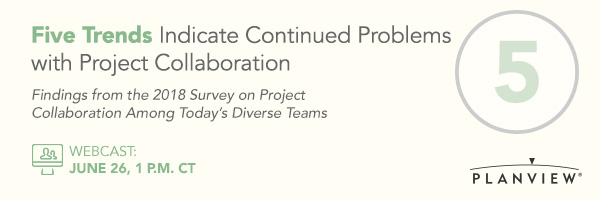
Enabling and ensuring that organisations are delivering against their corporate strategy is the common goal for both enterprise architecture and the PMO, but both seem to be missing the goal, and executives agree.
A 2014 survey by The Economist suggested executives believe that activities that support their strategy goals are vital. But 60% of them don’t know how to accomplish this, with only 56% suggesting that they have either in part or in full been able to achieve their strategic goals. Watch the video, “What can an EA do to work with their PMO better.”
The PMI and others say that, in part, such failures have been due to both enterprise architects and the PMO focusing too much on individual projects and systems rather than on delivering on strategy. Other surveys suggest that while both the PMO and enterprise architects are most effective when operating at a business unit level or higher and focus on companywide performance, only around 50% of groups actually do so.
Both groups report that their success is highest when they have strategic alignment, while at the same time they agree that failure rates are still too high. As a result, both groups face increasing pressure to deliver more with less.
In short, EA and PMO teams should be united by a common cause – increasing their perceived value to the business – and both groups need to raise this to the top of their personal agendas, or risk being irrelevant at the executive level. We already know they tend to be united in a couple of common problems: a) both groups have, and are perceived as, being too stuck in the weeds on tactical objectives, b) both groups struggle to sell the idea that doing it right is cheaper than just doing – in the long term!
Here are three actions to increase collaboration and reduce friction between the PMO and EA
- Agree What to Share and When – No business wants to pay twice for the same task, and executives struggle to decide when managers are competing against each other. In fact, when two groups compete for “turf,” often the result is to give that “turf” to a third group; thus, both the protagonists lose out! No one knows better how to run projects and deliver the benefits like the PMO team, so EA should get out of the project business and let the experts get on with it. This will likely result in increased credibility for EA, as people will see their projects as now delivering against expectation. However, the PMO is not really the right place to decide what projects need to be done first (unless as part of a wider program). EA is the group that should take the lead in identifying how and what the business needs to change to deliver against strategy (Is it a process change? Is it a system change? Is it a combination, etc.) When that Roadmap for change has been delivered by EA, then the PMO can work out how best to deliver the projects against it. So, the key is for both groups to sit down together and work out when they should be driving and when they are the passengers – inevitably, they are both on the same journey and will need to be in the car at the same time.
- Present as a Cohesive Team – It will be far easier for executives to fund projects and feel good about potential results when their people are presenting a united view. Of course, it also means that one may be presenting bad news. It is harder for people to ignore when a plan with actions and reasons is presented – especially if these are done in the context of that enterprise roadmap that demonstrates what the organisations overall goals are, and why this decision helps them to get there.
- Make Data Understandable and Share Data Widely – How much EA information in your organisation is either invisible to the PMO, or if visible, is incomprehensible? Conversely, how easy is it for EA teams to understand and use the systems from the PMO? – A key element in working together better is for the two groups to make shareable information explicit, understandable, and accessible for the other group. For the most part, the three types of information that need to be shared are a) Roadmaps, b) Capability Models, and c) Portfolios. There should be no need for each group to learn someone else’s system; ideally, they can surface these three types, plus others if you deem them relevant, inside the environment or tools they already work with. The mere act of creating a common understanding and reference point will make many other issues simply disappear.
By following these three actions, the EA and PMO can achieve strategic alignment and work better together, resulting in an increase of their perceived value and, ultimately, an organization that can deliver against a unified corporate strategy. How well does your organization’s EA and PMO work together? Leave a comment below with any additional actions you have found helpful in increasing collaboration.







